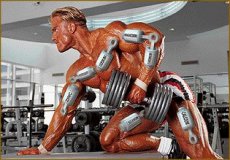Control of the electrolytic ball. The need for electrolytes
Last reviewed: 23.04.2024

All iLive content is medically reviewed or fact checked to ensure as much factual accuracy as possible.
We have strict sourcing guidelines and only link to reputable media sites, academic research institutions and, whenever possible, medically peer reviewed studies. Note that the numbers in parentheses ([1], [2], etc.) are clickable links to these studies.
If you feel that any of our content is inaccurate, out-of-date, or otherwise questionable, please select it and press Ctrl + Enter.

The concentration of electrolytes in cell membranes should be strictly controlled to ensure the functions of the cells of the whole organism. Electrolyte imbalance, for example, of the heart muscle, can be detrimental, so the kidneys are well adapted to maintain electrolyte balance, retaining or releasing minerals such as sodium, chlorine, potassium, calcium and magnesium. In addition to the existence of an "appetite" for sodium chloride, there is no reason to assume that the consumption of other minerals is regulated by similar reactions. Provided that energy consumption with food is adequate, the consumption of minerals usually exceeds the demand for them, which provides a positive mineral balance.
The need for electrolytes
Loss of electrolytes is accompanied by loss of fluid in the urine and sweat. Athletes and workers who sweat daily, can also lose a lot of electrolytes, especially sodium and chlorine. Potassium is also excreted with sweat, although its concentration is much lower (usually <10 mmol-L-1) than sodium (20-100 mmol-1). Since the concentration of sodium in different people is different, some are prone to a large sodium deficiency, while others are not. The risk caused by heat and muscle cramps is associated with loss of sodium with sweat.
The amount of sodium chloride lost with sweat is quite significant. For example, a footballer, training 5 hours a day, loses 8 liters of sweat (1.6 liters per hour). If his sweat contains an average of 50 mmol Na + per 1 liter, the total loss of sodium is 9200 mg (23 g NaCI). This loss, which does not include 100-200 mmol of sodium, usually excreted in the urine, indicates that many physically active individuals have large needs for sodium chloride to recover its losses with sweat.
The human sweat contains small amounts of dozens of substances, of which many are minerals. Even with strong perspiration, it is unlikely that losses from sweat of such minerals as magnesium, iron and calcium, provoked a mineral imbalance in most people. However, for some people, such losses can create additional nutritional needs, as in the case of loss of calcium with sweat in physically active women. More research is needed to determine whether it is necessary for such people to increase the daily intake of these substances.


 [
[